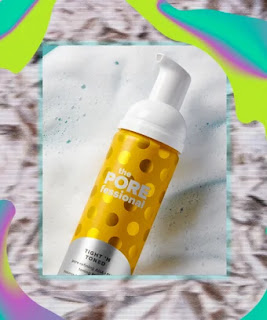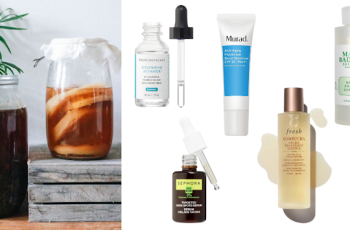
How Pollution Affects Your Skin and What You Can Do About It
Pollution is bad for the planet, and it’s bad for your skin, too. Our skin is easily affected by environmental stressors and can be damaged without us even realizing it. With millions of people living in cities and busy towns, our skin is exposed to harsh elements every day. It’s no wonder that there has been an increase in public interest in protecting our skin from pollution. Don’t worry, we’re here to help you learn more.
What is air pollution?
In short, air pollution is the dirt particles and gases released in our daily lives. We are exposed to this from many sources, such as car exhaust, construction sites, cigarette smoke, and air conditioning. Dirt particles are too small to be seen by the naked eye and can penetrate the surface of the skin, causing clogged pores and uneven skin tone. Once pollution has penetrated the skin barrier, more pollution can penetrate more easily. Fortunately, you can keep your skin healthy by maintaining an effective skin care routine, but more on that later.
How does pollution affect your skin?
Pollution consists of tiny particles of dirt, soot, and dust found in the everyday environment. These particles enter the skin and have a negative effect on it called oxidation. Over time, this can lead to a number of different problems, such as premature aging, dark spots, and even skin cancer.
Not only does pollution feel dirty on the surface of the skin, but nanoparticles and chemicals can penetrate the skin’s epidermis, causing what’s known as “oxidative stress,” which weakens the skin’s natural barrier. This protective barrier works to fight harmful toxins and free radicals that attack the skin. In most cases, it succeeds, but it’s not indestructible and can cause inflammation.
The following skin problems are caused by overexposure to pollution without taking the proper steps to protect the skin:
Skin pigmentation, such as dark spots and uneven skin tone
Enlarged pores
Redness and rashes
Fine lines, wrinkles, and all signs of premature aging
Skin conditions like eczema, rosacea, and flare-ups
Breakouts like pimples and blackheads
Dull, lackluster complexion
As you can see, pollution is one of the leading causes of skin damage. You can’t make it too hard on yourself, as it’s impossible to 100% prevent pollution. However, there are steps you can take to counteract the damage it causes.
How to protect your skin from pollution?
Luckily, there are products specifically designed to protect your skin from pollution. Remember to cleanse your skin twice a day and use products that contain antioxidants (molecules that can neutralize free radicals on your skin).
Step 1 – Deep Cleansing
When I say deep cleansing, I don’t mean a quick wipe with a cotton pad soaked with makeup remover. To ensure your skin is thoroughly clean, you must first remove all traces of makeup. You can do this with any product, such as a cream or balm. I recommend against using makeup wipes, as they don’t completely remove makeup from your skin.
Once you’ve removed your makeup, it’s time to start cleansing. Choosing a formula with AHAs or antioxidants will provide extra support to your skin, helping it shed dead skin cells and remove dirt, oil, and debris that accumulates in the lower layers of the skin, which can cause breakouts and uneven skin tone.
Your skin should feel clean and comfortable, but not tight. While it may be tempting to overwork your skin, stripping away excess oils from your skin barrier won’t benefit your skin, and it won’t function properly, which means you’ll be starting from scratch.
Step 2 – Exfoliation
Remove all dead skin cells and remaining traces of pollution to rejuvenate your skin for an all-around healthy glow. You can choose between a manual facial peel or a chemical peel toner. Both work wonders for the skin, but should not be overused as this can cause an imbalance in the water and oil balance of your skin.
Step 3 – Add Antioxidants
Antioxidants are the best thing to fight pollution. They fight and neutralize free radicals in the skin that can cause premature aging and irritation. Many formulas contain antioxidants like vitamin C, but we recommend using it in a serum so that it can be absorbed into the skin as long as possible and work in the lower layers of the skin. If you want to learn more, read our blog post on how antioxidants can help improve skin health.
Step 4 – Moisturize
Your skin needs moisture to function. Applying moisturizer twice a day will keep the epidermis plump and hydrated, allowing the skin barrier to function properly, leaving skin looking younger, softer, and more radiant.
Step 5 – SPF
While the sun’s UV rays aren’t considered pollution, overexposure to radiation can make it easier for free radicals to penetrate the skin and cause damage. If you apply products with an SPF of 30 or above every day, you create an extra barrier to protect your skin, while also keeping dirt particles away from your skin for longer.
Can makeup protect your skin from pollution?
In some ways, makeup is considered the skin’s second best defense against oxidative stress. The pigments and other light-reflecting ingredients in foundation act as a great physical barrier to the skin. Not to mention, many makeup products now contain a range of skincare ingredients, such as SPF and vitamins.
However, protecting your skin from pollution with makeup is a double-edged sword. It’s best not to sleep with your makeup on, as this can cause a lot of problems for your skin. Acne, blackheads, fine lines, and enlarged pores that plague your face weaken the skin barrier and allow air pollution to cause more damage. Make sure to remove your makeup every night. Trust me, your skin will thank you.
Pollution is something we have to deal with every day. However, now you have a better understanding of how to treat your skin and address the problem so that your skin can repair itself over time, giving you a healthy, even, youthful complexion every day.
Are you concerned about uneven skin tone? For more information, check out our blog post on skin care tips for treating dark spots.


